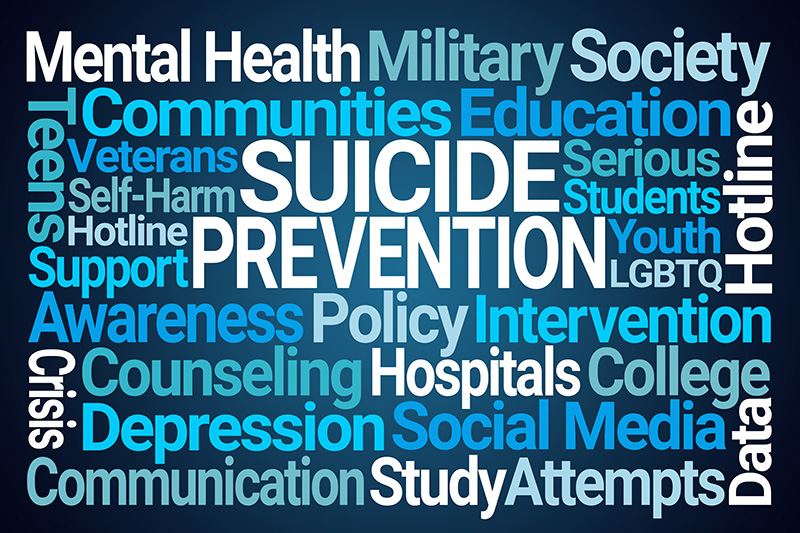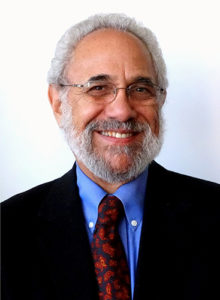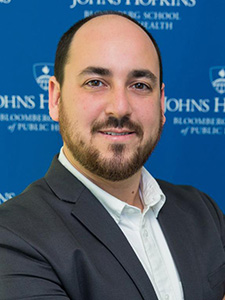The pandemic, overdue confrontations of racism, and fears about the outcome of the 2020 election have diminished America’s alarm about rising drug overdose and suicide rates. But these epidemics continue, albeit in the shadow of COVID-19.
This fall 2020 issue of Behavioral Health News is devoted to the crisis of suicide in the first two decades of the 21st century. Over this period, overall suicide rates in the United States have risen by 36.5%, an alarmingly high increase. It is all the more alarming because in the last decade of the 20th century, suicide rates declined by nearly 15%.
Something has happened in the beginning of the 21st century to fuel an epidemic of suicide. What? And what can be done about it?

Background Information
- Suicide is the 10th leading cause of death in the United States. It is the second leading cause of death for Americans under 45. The rate of suicide is higher but a less significant cause of death for people over 45, because they are increasingly likely to die of other causes as they age.
- While females attempt suicide far more often than males, males are more than 3 times as likely to complete suicide. This is most likely because males tend to use guns to take their own lives. Women are more likely to use less lethal means.
- The highest rate of suicide is among males 75+. But the rate for that age group has gone down since the turn of the century, while the rate for working age men has gone significantly up.
- Suicide is more common among White people than people of color overall, except for Native Americans, who have the highest rate of suicide and the highest increase in rate in this century. Although rates of suicide have increased among Black people, Hispanics, and Asians, they complete suicide at less than half the rate of Whites.
- Suicide is more common, and rising faster, in rural than in urban or suburban areas.
- Guns are the most common means of suicide, especially among men in rural areas. Hanging and drug overdoses are the next most common but are comparatively infrequent.

Michael B. Friedman, LMSW

Paul S. Nestadt, MD
The Many Risk Factors of Suicide
- Mental illness
- Substance abuse
- Access to guns
- Chronic physical illness, especially illnesses that are disabling, terminal, and/or involve chronic severe pain
- Grief
- Being a victim of ongoing violence
- Social isolation
- Homelessness
- Recent onset of dementia
- Lack of engaging, satisfying, and/or meaningful activities
- Experience of discrimination,
- Prior suicide attempts (although 60% of suicide decedents have never previously attempted suicide)
- Family or spousal history of suicide
- History of childhood trauma or being bullied.
According to the interpersonal theory of suicide, two critical factors are a lack of “social connectedness” and a sense of “burdensomeness.” The more risk factors, the greater the risk, but completed suicides are statistically rare even among people with several risk factors.
Why Are Suicide Rates Rising and What Can be Done About It?
There are two broad but not mutually exclusive perspectives from which these questions can be answered—clinical and sociological.
The clinical perspective on suicide is based on the fact that about 90% of the people who complete suicide suffer from a mental illness, usually an affective disorder, especially major depression. There are also high rates of suicide among people with schizophrenia (especially during their first psychotic break), substance dependence (especially alcohol or opioids), or PTSD (especially veterans).
Does the rising suicide rate reflect rising prevalence of these mental disorders or a decline in treatment? There is some evidence that the prevalence of mental and substance use disorders has risen, but so has percentage of Americans getting treatment. It is likely, however, that much of the increase in treatment is of people without a diagnosable disorder that suggests risk of suicide.
Despite the ambiguity of epidemiological evidence, there is widespread agreement that rising suicide rates reflect failures of the American behavioral health system.
Some mental health advocates make the broad claim that rising suicide rates are the outcome of deinstitutionalization, i.e. of reducing psychiatric hospital beds without providing adequate alternatives in the community. The problem with this claim is that suicide rates declined in the United States during the peak years of deinstitutionalization. That notwithstanding, some argue that the reduction of psychiatric hospital beds has reached a tipping point and that now more are needed.
Another line of thought concludes that rates of suicide declined when anti-depressants were introduced and that rates of suicide increased when a warning was issued about potentially deadly side-effects of anti-depressants. The problem with this point of view is that, overall, the use of antidepressants has increased while suicide rates have been rising. It may be, however, that they are being used by people who have low suicide risk while use by people with higher risk has diminished. Advocates of this perspective call for more targeted use of anti-depressants.
Many behavioral health advocates are skeptical about claims that more meds or beds will bring down suicide rates. But virtually all mental health advocates agree that tremendous improvements in the nation’s mental health system are needed. There was strong support for the recently legislated creation of a 988 number for psychiatric crisis intervention. And there is also strong support for enhancing the capacity to provide access to quality of behavioral health services.
There is also widespread agreement that identification of suicide risk needs to improve. Considerable attention focuses on primary care physicians because 45-70% of people who take their own lives have been to the doctor within thirty days of their suicides. Would more screening by physicians make a difference? There is some debate about the value of screening specifically for suicide risk because these screening instruments reveal suicidal ideation but not the likelihood of completing suicide. Because of the relative rarity of completed suicide, these screeners are plagued by false positive screens for suicide, as well as unacceptable levels of even more tragic false negatives. Still, there is general agreement that screening for depression and substance abuse could be helpful. (Failure to screen, of course, does not explain the rise in suicide rates since doctors were certainly not screening for suicide when suicide rates were lower.)
Suicide prevention advocates also call for better training of behavioral health professionals and other health and human service providers not only in identification of suicide risk but also in management of risk. Traditional efforts of distinguish between serious suicide risk and suicidal thoughts not likely to result in attempts focused on questions such as whether the person had a plan and the means to complete suicide. That is important, but it is now known that most suicides are impulsive. So, the key appears to be developing a safety plan that helps a person considering suicide not to attempt it if the impulse becomes strong. Very importantly, this involves limiting access to the means of suicide, especially guns. Training in this shift in orientation about people with suicidal ideation could make a significant difference.
Clinicians, of course, have a responsibility to take protective action if a patient is a clear and present danger to self or others. What they should do depends on the circumstances, and legal requirements vary from state-to-state. Call 911, call a mobile crisis team, make a report of dangerousness to a local authority, call for removal of weapons from the home, begin an inpatient or outpatient commitment procedure? It is not clear that behavioral health and other health and human services professionals working in community settings are well-informed about what actions to take, or even the extent of their legal tools as written in their own jurisdictions.
The sociological perspective on suicide has a long history harking back to Emile Durkheim, who studied suicide rates at the end of the 19th century. He identified a number of sociological factors that increase the risk of suicide, most famously “anomie”.
Social determinants of mental and substance use disorders and of suicide have become an increasing focus of concern in recent years. For example, considerable attention has been paid to the ease of access to guns in the United States and to the apparent link between economic circumstances and suicide rates.
There is strong evidence that states without meaningful gun control laws have higher rates of suicide than states with such laws even after controlling for important differences such as rurality and race. This leads most behavioral health professionals to call for strong gun control measures.
There is also historical evidence that suicide rates rise and fall with the economy. But in the United States the current rise in suicide rates does not seem to be closely linked to the economy. Yes, suicide rates went up during the great recession that began in 2008, but they continued to go up as the economy grew stronger. In addition, in the European Union, suicide rates have trended down since the turn of the century even though the vicissitudes of their economies have paralleled those in the United States.
Ann Case and Angus Deaton have developed an interesting theory that links economic factors to what they call “deaths of despair.” The link, they say, and the reason for the declining life expectancy in the United States even before the pandemic, is not between suicide and the overall economy but between it and a particular subpopulation that has rising rates of suicide, drug overdose deaths, and alcohol-related deaths. This subpopulation consists of white working age men with no more than a high school education—a subpopulation that is increasingly closed out of upward mobility or even economic stability in America. In their most recent book, they link “rising deaths of despair” with failures of capitalism and call for progressive social change in America. It is interesting that they have been criticized for failing to identify People of Color and women as part of the population in despair in America.
There are other theories of social causes of suicide. For example, Julie Phillips notes that the rise of suicide in America has taken place especially among the Baby Boom generation. Raised with a promise of happiness, this generation may be more vulnerable to disappointments. Other possibilities include a growing sense of disconnectedness and dislocation in a society marred by vast economic, racial, and political divides. Or perhaps a loss of traditional values and sources of meaning as reflected in the decline of participation in religious institutions is driving despair and suicide. Or perhaps it is changes in family culture—fewer marriages, more mobility, less acceptance of a responsibility to care for one’s own. Or perhaps it is the significant rise in social isolation, or despair about the state of the world and the future of the human species. It will certainly be interesting to see whether suicide rates rise during and after the pandemic, which brings its own set of anxieties, new levels of isolation, economic turmoil and unemployment, an increased rate of gun ownership, and grief both for a lost way of life and more concretely for lost loved ones.
What to Do?
Clinical Improvements: There is widespread agreement that whatever the cause of rising suicide rates, reversing the trend requires improving both the physical and behavioral health systems. This would include:
- Establishing a 988 number to call instead of 911 in a psychiatric crisis
- Improving identification and treatment of mental and substance use disorders in primary health care
- Improving the response to demoralizing health conditions
- Improving pain management using non-opioid interventions
- Improving integration of the physical and behavioral health care
- Increasing capacity, access, and quality in the behavioral health system
- Increasing the use of safety plans for people considering suicide—including safe storage or removal of guns
- Increasing early intervention for people experiencing their first psychotic break
- Enhancing outreach to populations at high risk of attempting or completing suicide
- Increasing public education to combat stigma, to increase public understanding of behavioral health, and to increase knowledge of how to get help.
Societal Interventions: Given the social determinants of behavioral health problems in general and suicide in particular, it is important to work towards social change as well as clinical improvements. This is especially critical after recognizing the inadequacies of our current individual risk assessment tools. A public health approach, intervening at the population level, is vital.
Perhaps most importantly this includes efforts to reduce access to guns. But it should also include efforts to reduce social isolation; address poverty, disparity, and discrimination; address economic structures that result in disconnection from opportunity as well as access to care; address social divides that result in disconnection; and even try to address the human need for meaning.
Challenges and Opportunities of the Pandemic
Suicide, though a continuing epidemic, has fallen under the shadow of the pandemic, which now, and for good reason, draws attention away from most other health-related issues. The pandemic, at this writing, has caused twice as many deaths in half a year as suicide did in all of last year. But the pandemic has also had psychological fallout that has created great concern and has produced innovative interventions such as tele-health and outreach to combat social isolation and more. Perhaps, these innovations will facilitate connections with people at high risk of suicide both to counter their isolation and to make treatment more accessible.
Paul S. Nestadt, MD is Assistant Professor of Psychiatry at the Johns Hopkins School of Medicine, with a clinical focus on severe mental illness and a research focus on the epidemiology of suicide. Michael B. Friedman, LMSW was Founder and Director or the Center for Policy, Advocacy, and Education of MHA of NYC until he retired in 2010. He continued to teach at Columbia University School of Social Work until 2019. Now he serves as a volunteer behavioral health advocate with AARP of Maryland. He can be reached at mbfriedman@aol.com.




sobering, but comprehensive, accessible and practical. thank you
[…] a critical bit of context in our understanding of how to deal with America’s mounting suicide crisis amid the most heavily armed citizenry in the world. Through a survey of more than 9,000 adults, […]
[…] can be avoided in some cases. There is a way for people to be assisted. It is possible to have suicidal crises for a short period of […]